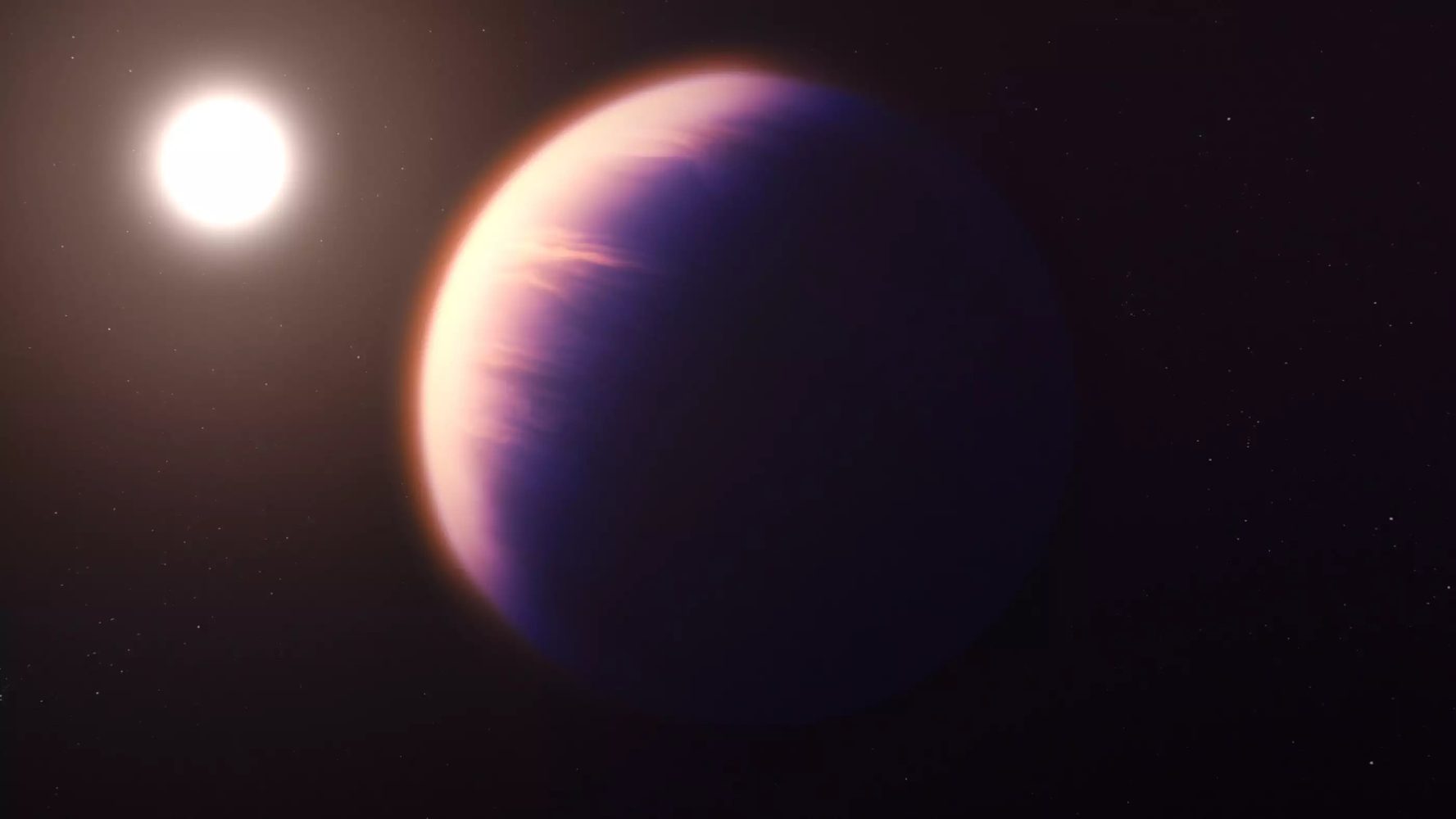Some exoplanets are scorching hot, while others have supersonic winds. But the latest target of the ESO’s Very Large Telescope (VLT), WASP-121b? Well, this exoplanet has titanium rainstorms—a weather system ripped straight from the pages of science fiction.
Located 900 light-years away in the constellation Puppis, WASP-121b is an ultra-hot Jupiter, a gas giant orbiting its star so closely that a year lasts just 30 Earth hours. One side of the planet is permanently exposed to extreme heat, while the other remains in perpetual darkness.
And now, scientists have mapped the planet’s atmosphere in three dimensions. It’s the first time we’ve accomplished such a task, and it has revealed something extraordinary about WASP-121b. This exoplanet is home to ferocious winds, layers of scorching gas, and titanium rainstorms.
That’s right. Instead of water, WASP-121b experiences storms of liquefied titanium that fall from metal clouds. These metallic downpours are formed in the turbulent lower atmosphere before being blasted sideways by jet streams moving faster than any known storm in the Solar System—including Jupiter’s Red Spot.
The discovery of titanium deep in this exoplanet’s atmosphere was quite a surprise. Previous observations had failed to detect it, likely because it was hidden beneath all the layers of violent weather. However, this new data captured using the ESO’s ESPRESSO instrument showed molten metal condensing and falling as rain, creating violent titanium rainstorms that pepper the exoplanet’s surface.
“This planet’s atmosphere behaves in ways that challenge our understanding of how weather works — not just on Earth, but on all planets,” said lead researcher Julia Victoria Seidel. “ It feels like something out of science fiction.”
As if titanium rainstorms weren’t enough, the researchers say that supersonic winds also whip elements like iron, sodium, and hydrogen across the sky, with a jet stream that accelerates as it moves, spanning half the planet and making Earth’s hurricanes look tame in comparison.
This is the first time scientists have mapped an alien world’s atmosphere in such depth, providing a glimpse into how extreme exoplanet weather systems function. Future telescopes, like the Extremely Large Telescope (ELT), could allow researchers to investigate smaller, more Earth-like worlds and their atmospheric conditions.
The post Scientists observed violent titanium rainstorms on an alien world appeared first on BGR.
Today’s Top Deals
Today’s deals: Apple accessory sale, $90 Ninja Air Fryer Pro, $188 ergonomic office chair, more
Presidents’ Day weekend deals: $298 Nintendo Switch OLED, $279 Apple iPad 10, Dell & HP laptops, more
Today’s deals: $172 unlocked iPhone SE, $20 Amazon credit, Waterdrop RO water filters, $24 WiFi extender, more
Today’s deals: $149 AirPods 4 with ANC, 20% off Crest 3D White toothpaste, $18 Roku Express, more
Scientists observed violent titanium rainstorms on an alien world originally appeared on BGR.com on Thu, 20 Feb 2025 at 18:55:00 EDT. Please see our terms for use of feeds.
